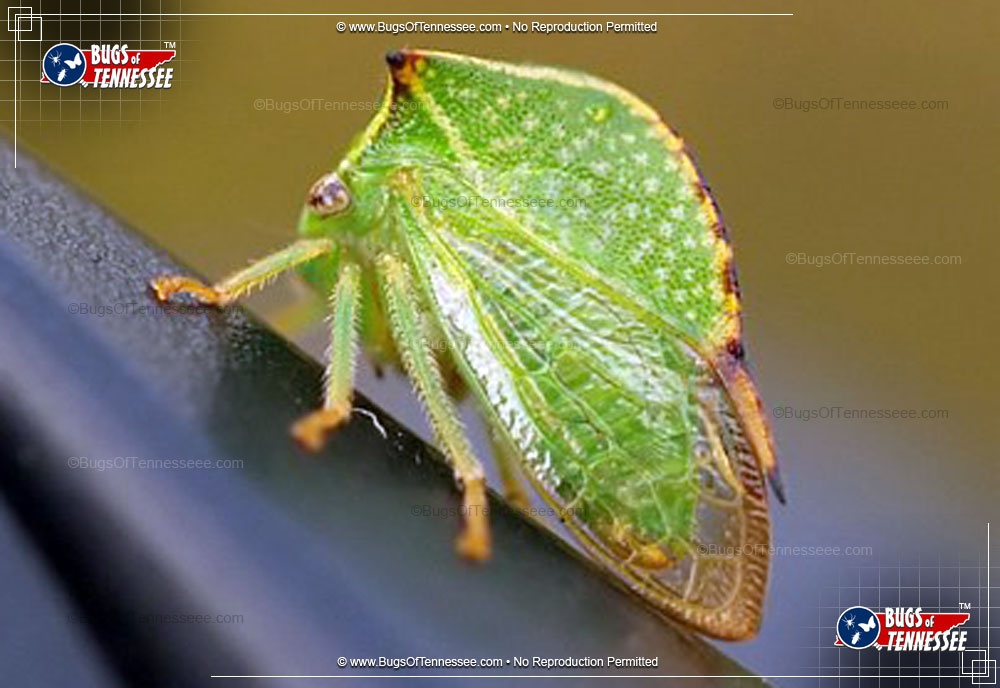Insect Order (Hemiptera)
HEMIPTERA (TRUE BUG)
Piercing and sucking mouthparts - or rostrum - are what differentiate True Bugs from the rest and this means that the insects generally fed on plants as a natural diet. Around 12,000 such species are recognized in North America alone. These bugs can be found on land and in the water and have thick wings kept close to the body. A prominent identification feature is the triangular-shaped scutellum located on the thorax aft of the protonum. The Hemiptera order covers True Bugs, Cicadas, Hoppers, and related insects.
Taxonomy
Other Names: "Planthopper; Cicada"
The Taxonomic Breakdown is the scientific way to categorize a partocular insect species from its largest group (Animalia) to its smallest (variable). The Genus and Species categorizations taken together make up the species' scientific name shown above, in this case Stictocephala spp..
Kingdom: Animalia
Phylum: Arthropoda
Class: Insecta
Order: Hemiptera
Family: Membracidae
Genus: Stictocephala
Species: spp.
Characteristics
Harmful: Known to be harmful in one way or another.
Outdoors: Typically found across the great outdoors.
Six-Legged: Six legs are common to this insect.
Small / Tiny: Noticeably small to the naked eye.
Winged: Has wings to hop or fly over distance.
Description
The Buffalo Treehopper is also known by these other names:
Planthopper :: Cicada
The Buffalo Treehopper has been identified by site users by the following descriptors:
small winged wings green yellow eyes six-legged outdoors harmful jumping
Sighting Guide
The general likelihood of encountering this insect based on a given month of the year in the state of Tennessee. Generally, the best sighting months are June through August with peak occurring in July.
Size
Below is a representation of the 'smallest-small' and 'largest-large' sizes commonly associated with the Buffalo Treehopper. Due to monitor differences, sizes may not be exact on your particular screen. Conversions to millimeters are provided for convenience.
Lowest-Low:
0.24 inches
(6 mm)
Highest-High:
0.35 inches
(9 mm)
Identifying Colors
Below you will find the colors most commonly associated with the Buffalo Treehopper. Both Primary and Secondary colors are represented in the showcase. Due to monitor differences, colors may not be exact representations.
Tennessee County Reach
The Buffalo Treehopper can be found in the following Tennessee counties:
Anderson; Bedford; Benton; Bledsoe; Blount; Bradley; Campbell; Cannon; Carroll; Carter; Cheatham; Chester; Claiborne; Clay; Cocke; Coffee; Crockett; Cumberland; Davidson; De Kalb; Decatur; Dickson; Dyer; Fayette; Fentress; Franklin; Gibson; Giles; Grainger; Greene; Grundy; Hamblen; Hamilton; Hancock; Hardeman; Hardin; Hawkins; Haywood; Henderson; Henry; Hickman; Houston; Humphreys; Jackson; Jefferson; Johnson; Knox; Lake; Lauderdale; Lawrence; Lewis; Lincoln; Loudon; Macon; Madison; Marion; Marshall; Maury; McMinn; McNairy; Meigs; Monroe; Montgomery; Moore; Morgan; Obion; Overton; Perry; Pickett; Polk; Putnam; Rhea; Roane; Robertson; Rutherford; Scott; Sequatchie; Sevier; Shelby; Smith; Stewart; Sullivan; Sumner; Tipton; Trousdale; Unicoi; Union; Van Buren; Warren; Washington; Wayne; Weakley; White; Williamson; Wilson
Buffalo Treehopper Picture (1)
1 of 1

Image of an adult Buffalo Treehopper insect at rest.; Credit: Image by Erik Z.; Public Domain.
This image is original to
www.InsectIdentification.org; Used with Permission.
